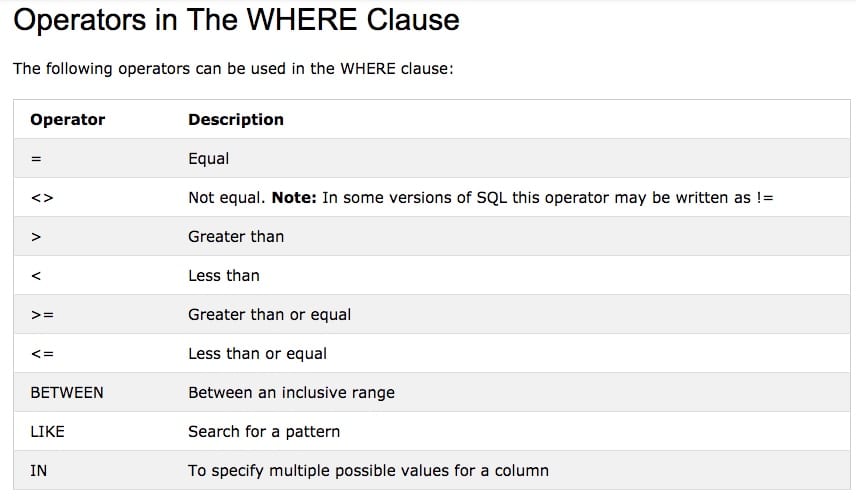Assignment #3
Frank Burggraf, 85,
John Emory, 88,
Brandon McKinney
Assignment Instructions:
Assignment #3 Story: Interview Veterans About Our Preliminary Findings
Story assignment: Talk to at least two veterans about data in your assigned charts and write up a story. Do not interview a veteran another student has interviewed. No duplication.
How do you figure out the overlap? Ask the veteran if he or she has spoken to another student. There are some 4,000 veterans in Fayetteville, according to the Census. This should not be that complicated.
Include the chart you used or modified in the story, along with a photo of the veteran. 400 Words.
Purpose: We have dug through the data. Now it is time to discuss with veterans what we are finding and what they think of it. Required: Name, address, age, email and phone required for each veteran, or your interview doesn’t count. I need this in order to fact-check the assignments.
Required: Photo of veteran suitable for publication.
Each person hands in their own assignment without duplicating interviews of veterans.
I am splitting up the data so we can get a broad reaction from veterans to our pending work.
Data for interviews:
–Erin, Alex and Katie: Loss rate.Suggested question: We reviewed the loss rates of staff at Fayetteville and they seem to have turnover with psychiatrists and some other specialists. Do you notice turnover with the physicians you see?
–Leah, Veronica and Taylor: SAIL ratings Suggested question: Fayetteville’s SAIL rating jumped from 2 to 5 – have you noticed an improvement in the hospital during this time?
–Chase, Andrea, Lindsey: Electronic wait list or SHEP data Suggested question: We looked at a veterans’ survey on access issues. Fayetteville rated in about the middle. What do you think about that? Does it match your experience?
–Kayla, Hermon and Betsy: Pending Wait Times Suggested question: The pending wait times data shows an improvement over the past several years. What has been your experience?
Note: You need to ask veterans about your assigned data. It is no problem if you ask about the other data, but you have to cover your assigned data in the story.
My slides from the briefing VA Data Charts 10-27-17.pptx
Assignment due Thursday, Nov. 9, 11:59 pm on Blackboard. Submit in a Word document only.Assignment is 100 points and counts as a full assignment. Follow AP style
FAYETTEVILLE, Ark. — National journalists will gather to talk about why news matters more than ever at the annual Center for Ethics in Journalism and School of Journalism and Strategic Media forum.
The event, “Forget Fake: How To Get To Real News,” will have a panel of top-notched journalists: Washington Post’s Media Writer Paul Farhi; CNN’s Standards & Practices Executive Director Steven Holmes; Poynter Institute Ethics Chair Indira Lakshmanan; 2017 Visiting Distinguished Professor and USA Today Contributor Alicia “Lisa” Shepard, who will also moderate.
“In today’s media environment, everyone must use the same skills journalists use to ferret out out fake from fact,” said Shepard. “Regardless of title, we are all creators, editors and publishers in the online world. It’s our ethical responsibility to not share information we haven’t checked out and to be conscientious news consumers. Always ask the question: How do you know that?”
The free forum will be Wednesday, November 8, from 6 p.m. to 7:30 p.m. in the Donald W. Reynolds Center on the University of Arkansas campus. Food will be served during check-in. There will be a sign-in sheet for those attending.
VA Officials Here Thursday, Nov. 9
Follow Up Interview With Wanda Shull and Dr Mark Worley, chief of staff of the Veterans Health Care System of the Ozarks, 3 pm Thursday Nov 9, here in Kimpel Hall.
Background on Worley:
https://www.fayettevillear.va.gov/about/leadership.asp
American Legion Commander Denise Rohan
Tuesday, Nov. 14, 10:30 am VA Auditorium
Be on time.
— park in the parking garage and walk up to Bldg. 3
National Commander’s Visit to Fayetteville Nov 14, 2017
National Commander Denise Rohan, the first woman elected as American Legion national commander, will be arriving in Fayetteville on Tuesday, Nov. 14, 2017.
Beginning at approximately 8:40 a.m., she will attend a briefing by the Veterans Administration and Veterans Administration Volunteer Services and tour the VA Hospital and Veterans Home. Afterwards, she will visit Post 27 in Fayetteville for lunch and to meet with Legionnaires and their families.
The National Commander will be visiting western Arkansas November 12–15, 2017. During her four-day sweep through western Arkansas, Rohan will be making stops in Sheridan, Crossett, El Dorado, Texarkana, DeQueen, Mena, Charleston, Fort Smith, Fayetteville, Siloam Springs, Rogers, and Bella Vista before heading to West Plains, Missouri.
Most of her visits will be to local American Legion Posts. Also included in the tour will be stops at the B-17 Memorial in Sheridan and a briefing and tour of the VA Hospital and Veterans Home in Fayetteville.
During her visit, Legionnaires and their families are encouraged to meet and visit with her at their local American Legion Post.
A 33-year Legionnaire, the U.S. Army veteran and Wisconsin resident’s theme this year is “Family First,” which is based on The American Legion’s motto of “For God and Country.”
For more information contact Post 27 Commander Mike Foster at 479-305-0352 or Post 27 Adjutant Mike Culpepper at 479-466-5248.
—
Kathy Jeffrey
Public Affairs Chair, American Legion, Department of Arkansas
303-304-9755
SQL Is Fun
Really.
For the next three weeks, you will learn basic coding in SQL, a standard database language. This will enable you to build databases and maintain databases. This language is a core skill in data journalism.
Your homework for Tuesday is this: Review the following material and practice with the exercises. We will work with SQL on Tuesday in class.
- What does SQL stand for?
- What is SQL and Why Do I Need It? Relational database. “SQL is a standard language for storing, manipulating and retrieving data in databases.”
- How Does It Work?
- When Can We Get Started? I Can’t Wait! https://www.w3schools.com/sql/default.asp
This week:
–Orientation with the queries and logic of basic SQL commands
–Import data and create a database
Part 1:Basic Commands.
We will be using this sample database called customers for these drills. Take a look at it.
This data is in our SQL tutorial. Here’s how we extract and filter the records to get what we want.
Major Commands:
SELECT
FROM
WHERE
GROUP BY
ORDER BY
—
SELECT: You tell the database what columns you want.
If you want everything, SELECT *
Example: SELECT * FROM Customers;
–Retrieves EVERYTHING (*) from the database called Customers
SELECT CustomerName FROM Customers;
–Retrieves CustmerName from the database called Customers
FROM: The basic command that just identifies which table you’re pulling data from.
Example: SELECT * FROM Customers;
–Retrieves EVERYTHING (*) from the database called Customers
WHERE: A filter. Allows you to grab only certain records do numerical and text string, or a horizontal slice of your data; you set criteria that has to be true in order for rows to be returned
SELECT * FROM Customers WHERE ContactName = “Maria Anders”;
–retrieves all records with Maria Anders as contact name
SELECT * FROM Customers WHERE ContactName LIKE “Maria%”;
–retrieves all records with Maria in ContactName. Note the addition of Like and the wildcard %
SELECT * FROM Customers WHERE ContactName LIKE “M%”;
–retrieves all records with M leads ContactName.
SELECT * FROM Customers WHERE ContactName LIKE “%M”;
–retrieves all records with M ends ContactName.
Here’s a list of operators:
Exercise:
Produce a list of all Contacts whose names are Martin, Maria, Mario, Mary, Martine, or Marie
Your Turn
Work on the tutorial: https://www.w3schools.com/sql/default.asp
TIP: Print our the table names and the first 2-3 rows of data as a reference
Quick Reference Sheet for these commands:
https://www.w3schools.com/sql/sql_quickref.asp
Exercise #1: GROUP BY
– This groups rows together by a certain field or fields so that you can do math on those groups, such as counting the number of records in each group or summing up the numbers in a field.
SELECT COUNT(CustomerID), Country
FROM Customers
GROUP BY Country;
–Here we are counting the number of countries in the database
Remember this command is paired with putting an aggregate function in your SELECT statement, such as COUNT(*) or SUM(noncitizen)
Exercise #2: ORDER BY
– This sorts your results by a field or fields, ascending (default) or descending (DESC)
SELECT * FROM Customers
ORDER BY Country;
–This sorts all of your data by country
SELECT Country, City FROM Customers
ORDER BY Country;
–This displays just the cities and countries, ordered by country
Exercise #3: DESC
–List of countries in descending order
SELECT * FROM Customers
ORDER BY Country DESC;
–List of countries in descending order
SELECT * FROM Customers
ORDER BY Country ASC;
–List of countries in ascending order
Exercise #4: Counting a List
SELECT COUNT(CustomerID), Country
FROM Customers
GROUP BY Country
Order by count (*) desc;
–This counts the countries and displays the list in descending order
SQL Exercises
- Find the total number of cities in the database, sort by descending order
- List all of the business and their addresses in the United States, sorting alphabetically by city
- Produce a list of all that counts all of the customers by countries in the database, sorted by descending order
Switzerland has how many customers?
United States?
Argentina?







